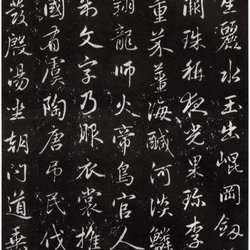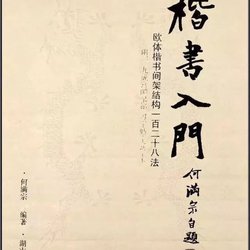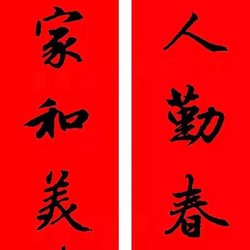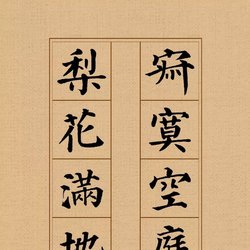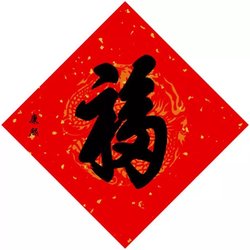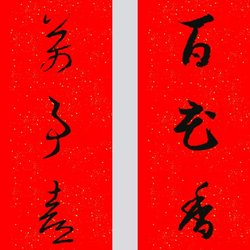The hard pen is different from other writing brushes. Although the Chinese characters written with the hard pen are still the Chinese character fonts created with the soft pen, this cannot be violated, otherwise it will not be recognized by others. What the editor brings to you below is Chunwang’s hard-pen calligraphy. I hope you like it.
Appreciation of Chunwang’s hard-pen calligraphy:
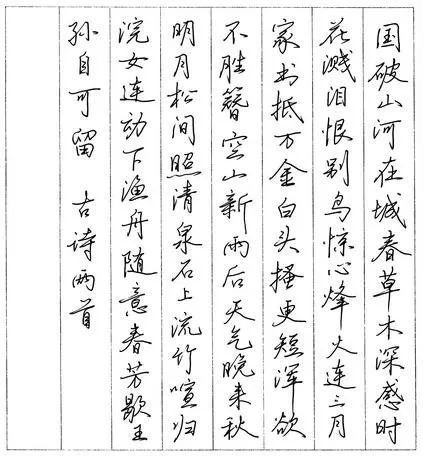
Chunwang's hard-pen calligraphy
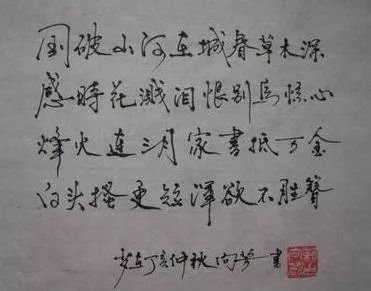
Features of hard pen:
The hard pen is different from other writing brushes. Although the Chinese characters written with the hard pen are still the Chinese character fonts created with the soft pen, this cannot be violated, otherwise it will not be recognized by others. Therefore, Chinese characters written with hard pen can still more or less express the traditional style of Chinese characters.
Soft pens and hard pens have their own characteristics. What are the characteristics of Chinese characters written with hard pens? When we use a "fuzzy" way of thinking and regard the strokes written with soft pens as "faces", we can also regard the strokes written with hard pens as "faces". Think of it as a "line". We regard the writing strokes of hard pens as "lines" because they basically can no longer express the expressiveness of soft pen strokes in the contrast of line thickness changes (except for special-shaped hard pens). Hard-brush strokes are just lines, and the traditional "turning" technique has lost its significance. In this way, Chinese characters written with a hard pen are just a combination of lines, which is a bit like the "steel wire seal script" created in the Qing Dynasty.
Hard pen calligraphy learning in primary school:
Hard-tipped calligraphy is the foundation of primary school calligraphy education. It is crucial to do a good job in hard-pen calligraphy education in primary schools. Hard-tipped calligraphy is different from brush calligraphy, so teaching hard-tipped calligraphy cannot be based on the brush technique. It should be intuitive and simple, and don't pay too much attention to the beginning of the stroke, the pause in the stroke, and the end of the stroke. Writing must be convenient and quick. In calligraphy education, I am constantly learning and thinking. How to enable primary school students to quickly master the writing of hard-pen characters. The following suggestions are put forward for the teaching of hard-pen calligraphy in primary schools:
1. Establish confidence in writing hard-tipped calligraphy from an early age. Chinese characters are unique to the country and have a history of at least five thousand years. Chinese characters are both a type of writing and a type of culture. Every Chinese character has deep cultural connotation. As a Chinese, you should write Chinese characters well. We must let students know that every student can write beautiful handwritten calligraphy after practice. It is necessary to build up the confidence to write Chinese characters well from an early age, let students understand the history of calligraphy, and cultivate students' patriotic enthusiasm.
2. Develop a good sitting posture. Good sitting posture is important for writing. "One fist is one foot away, and the tip of the pen is one inch away." Correct sitting posture requires a naturally straight back, open chest, and flat shoulders. The chest is about a punch away from the desk, the arms are slightly open on the desk, and the thumb and other four fingers of the left hand are separated into a figure eight shape and press the left side of the paper. When writing, keep your eyes one foot away from the paper. Don't hold the pen too low. When teaching calligraphy, students' sitting posture must be regulated. For students with incorrect sitting posture. Teachers should remind them frequently. Let students develop good sitting posture from an early age.

